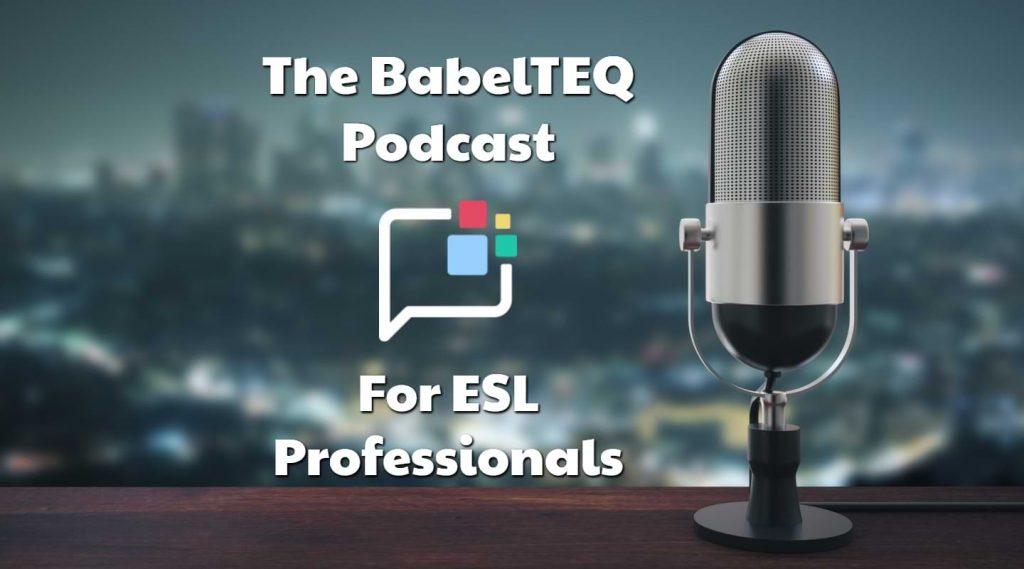In this article we’ll look at the resources and preparation you’ll need to teach English online, especially if your goal is to be an independent ESL instructor. If you’ve been working for a big ESL company for a while, then you probably already have the necessary communication hardware. I’ll do a review of that, and then we’ll discuss some web apps and other tools that you’ll need. But first, let’s consider what qualifications you require in order to teach English online.
Table of Contents
Teaching English Online Without a Degree
Most big ESL companies these days will insist on their teachers having an undergraduate degree or at least a TESOL / TEFL certificate. Usually they aren’t too picky about what you “majored” in as long as you’ve got your piece of paper to show you completed the course. The prevailing attitude of hiring companies seems to be that any old Bachelor’s Degree will tick the box.
TESOL (Teaching English to Speakers of Other Languages) and TEFL (Teaching English as a Foreign Language) courses vary widely in completion requirements and cost. It seems like one of the more popular TEFL certificates can be completed in 120 hours for €119 (but search Groupon first. You can probably find a huge discount coupon). Make up your own mind about the quality. Nevertheless, many companies will accept it as the only paper qualification you need to teach English online.
Fortunately, if you are working as an independent online instructor you can largely forget about such formal qualifications. I’m not saying these educational qualifications don’t make you a better teacher. In fact, I’m sure that in most cases they DO help to make you more capable in your work. What I’m saying is that formal qualifications aren’t strictly necessary if you want to teach English online by yourself.
As an independent instructor, what you should be doing is targeting a specific niche. Most of your students are going to pay more attention to what gives you “contextual authority” in that field. Your work background and life experience become more relevant. If you worked in the hotel industry for a year, that becomes a qualification to teach students about using English for the hospitality industry. 🛎️ If you studied commerce at University, that becomes a qualification to teach students about using English for business purposes. 💼 Your students will want to have reassurance that you understand their specific challenges. Understanding their situational vocabulary is one of the most important skills you will need to teach English online in a targeted niche.
Teaching English as a Non-Native Speaker
Sadly, no matter how fluent and qualified you have become in English communication, many big ESL companies won’t even offer an interview unless you are a citizen of an official English-speaking country. Even then, there exists some prejudice against certain accents. Anecdotally, South Africans seem to struggle with getting a fair chance. Certain employers will even overlook Brits and Australians because they don’t have the preferred “North American” accent. I’ve also heard of cases where smaller ESL companies have a preference toward people of a certain skin color ☹️
As a self-employed “niche” language teacher, these kinds of superficial distinctions are less important. If you are teaching “generic” English then students might care about accent differences, but when you dominate a vocational English niche those factors are diminished. In fact, being from the same culture as your students might even be an advantage. For example, if you are from a Middle Eastern background, then you have an advantage over other instructors who aren’t familiar with those cultures. If you are from Chinese heritage, you might have an advantage in being able to speak to parents of your student in their native tongue. What’s more, being able to communicate in a language other than English gives you a distinct advantage over monolingual English teachers in reaching out to new students online. What were disadvantages to getting a job with a big ESL company can become your advantage in finding and working with students independently!
Teaching Online Through a Marketplace
An alternative to working with a big ESL company is to register a profile with an online teacher marketplace platform. Here are some of the more popular choices:
- Preply
- iTalki
- VerbalPlanet
- CafeTalk
- Cambly
You can think of these as a “half-way” point between working for a company and setting up on your own. The advantage is NOT having to worry about a lot of the technical infrastructure you typically need to teach English online. They provide a page for you to create your profile and set your rates. They usually provide an online video communication system and will take care of the payment process. The downside is that it’s sometimes hard (especially if you are just starting) to distinguish yourself from all the other profiles. You become “commoditized” to some extent. They will also take a fairly steep percentage of your lesson revenue, between 15% and 30% in most cases.
Equipment You’ll Need
Although many instructors might manage quite adequately on a tablet (or phone?), I think that to offer a professional service you will need a desktop or laptop device. You’ve probably already got one. Be aware of your device specifications. RAM memory is an important variable when using video communication tools. 8MB is probably a minimum specification your computer will need to teach English online with modern web apps.
You’ll also need to check your internet connection. Zoom recommends an internet speed of 1.5 megabits per second (mbps). You can test your connection speed by going to http://www.speedtest.net/.
Most laptop brands have a built-in camera but if you are using an older desktop monitor (or you just want a better video camera experience) you should look at using an external camera. My favorite brand is Logitech where you can get a portable camera for as little as $US65, or if you are willing to invest a bit more, a BRIO ULTRA HD PRO WEBCAM for $199.

Opinions vary among instructors about the best audio setup 🎙️. Some people will just use their devices’ built-in speakers and microphone. Personally, I think that you should try to improve on the audio quality by having a dedicated microphone. Desk stand microphones like Blue Yeti are great but if your lessons call for a lot of movement and physicality (e.g. when teaching kids) just be aware that a wireless headset & mic will give you more freedom. My current choice is a Logitech USB wireless headset (I hate being tethered with wires!) Choose whatever works best for your budget.
A final piece of hardware that often gets overlooked is lighting equipment. Nothing gives a worse impression to students than a lesson delivered from a dark or gloomy room. Natural light works best but if you are doing teaching at all hours of the clock, obviously that’s not always possible. If the lighting in your room isn’t great, think about investing in a very affordable ring light and stand which you pick up on Amazon for as little as $US40. A bonus of this type of accessory is that most of them are designed for attaching around smartphones which you’ll really appreciate when it comes to creating your promotional video content.

(Jerry’s “two face” date from Seinfeld S09E10 😆)
Your Work Space
Put some thought into your physical surroundings as well. Do they reflect the kind of “brand” image you are trying to present to students? If your target is kids’ lessons, have bright fun colors, pictures and maybe fluffy toys 🧸 “in frame” when you are doing your lessons. There are lots of physical props you’ll want to incorporate into your lesson plans if you need to teach English online to kids.
Likewise, if you are delivering adult lessons make sure your background is clean and without clutter. It’s probably a good idea to take down those Marilyn Manson posters, too. Mind you, if you are using Zoom, Skype, ManyCam, Vectera or other communication options you might have the ability to “virtualize” your background i.e. either blur everything or use a video “green screen” type of effect. Impress your students by pretending to teach a lesson from a beach in Hawaii! Whatever you do, try to choose a place that will be relatively quiet and free from interruptions and distractions.
Teacherpreneur Marketing
ACADEMY
FACEBOOK GROUP
Online Communication Tools
When choosing a communication tool, you will need to consider cost and features. Check what limitations exist on free tools. For example, Zoom is a great choice but if you need to teach English online for group calls of more than two people, the free version is limited to 40 minutes. Also check whether you can play back sound from your computer through the audio connection. This will be important if you want to use YouTube or other audio/video learning materials in your lesson.
Check whether you can record your lesson and what limitations are around those recordings. It’s a nice “added value” for students if you can offer a recording of the lesson for the student to later review or you could permit the student to record the lesson themselves.
Also check whether your video tool allows screen annotation or offers a “white board” canvas feature to import PDF lesson material. You might need to consider a stand-alone online white board application like AWW. It’s free but there is also a pro version with some nice extra features that you can trial for free.
Keep in mind that a few video communication tools might be problematic for students within the People’s Republic of China to access. As at the time of this writing, access to Zoom is being restricted for individuals by the Chinese authorities. Skype is available through the browser for Chinese students but downloading the Skype app could be difficult for them. You can use GreatFire Analyzer to check which services are currently blocked within the PRC.
How to Schedule Your Lessons
As your business grows, you’ll need to select a scheduling tool 🗓️ in order to avoid calendar conflicts. Students require a simple, reliable means to book a lesson. It’s essential to have a way of doing this that doesn’t involve a lot of back and forth email tag. Calendly is a popular free tool. With their system, you can easily set up your available lesson times, build in “buffer times” if you need them, configure automatic email reminders and a lot more. The free version has enough features for most teachers getting started.
There are a few other scheduling systems available, some of which package together other features like invoicing and native video communication. Here are a few suggestions:
How to Get Paid
You’ll need to decide on a method for students to pay you. PayPal is probably the most ubiquitous of the basic payment gateways. It seems to be available in all but a few countries. Unfortunately, PayPal isn’t well known in some places. It also has a slightly confusing workflow that redirects customers to the PayPal website to complete the checkout payment.
Stripe offers a smoother checkout experience than PayPal. If you have a checkout or payment page on a website or invoicing app, the customer can complete their credit card payment without being redirected to another site.

Both PayPal and Stripe charge similar fees for processing; between 3% – 4% depending on your location. PayPal arguably has a better payout policy in that vendors can withdraw funds immediately. Stripe on the other hand works on a fixed schedule system, such as a given payout day every week. Stripe is also limited to vendors located in 39 specific countries (your customers can be anywhere). They are slowly expanding into more countries but you can see their current availability on the Stripe website. You’ll also want to familiarize yourself with the refund claim policies for each service.
Alternatives to these gateways do exist. You may wish to look into Payoneer, another popular option. Or if your target market is China and you want to accept money via Alipay, WeChatPay or Union you should look into PaymentWall which will facilitate payment without needing a bank account in the Peoples Republic of China.
Stripe has an integration with AliPay and at the time of writing, a similar integration is in beta stage with WeChat Pay. For China based customers it seems (according to Stripe customer service responses) that it will be possible to raise an invoice from your Stripe dashboard, send that to your customer in China and have them pay using their familiar AliPay and WeChat Pay systems.
Finding Your Students
In order to attract clients, you will want to have at least a minimal social media presence. Which one you choose depends on your personal preference (and perhaps your target market). LinkedIn is a good option if you are planning to provide lessons to people in professional niches. SnapChat and TikTok have a younger demographic. Pinterest seems to be skewed toward a more female (and higher income group) user base than Facebook. Twitter seems to be skewed toward a more male user base, at least in some countries. Social media is without doubt a cheap and easily managed way to find potential new students.
Canva is a popular and easy to use tool to create all the images you will need to teach English online professionally. You can create awesome looking thumbnails for social media and even graphics for your lesson content. They have a free account version and you can always upgrade to a professional account with more features.
Scaling Up Your Business
After you’ve found your first two or three students and validated your “niche concept” you’ll want to think about creating a more professional brand appearance for yourself. That means getting a well-designed landing page to help capture emails ✉️ of new student leads and/or bookings for demo classes and consultations. You should also consider an online method for requesting and receiving student testimonials. Social proof from satisfied former students is a persuasive way to attract new clients.
There are a few popular DIY website builder platforms available such as Squarespace, WIX and Weebly. Since 2019, Mailchimp has also offered free landing page templates. You can start with one of their pre-designed options and adapt it to your needs. Just keep in mind that there is a learning curve with any of these choices and the available templates might be somewhat restrictive.
Alternatively, you can look at “work for hire” sites like UpWork.com or Fiverr for a freelance designer/developer who can create and launch your own self-hosted website. WordPress is an extremely popular and versatile choice for small to medium size business and freelancers. According to their promotional material, WordPress powers more than a third of the websites on the internet. That’s an impressive statistic which suggests they are going to be around for a long time to come.
Finding Lesson Plans
The last point I want to cover is lesson plan material. You don’t need a fully developed suite of lesson plans when you begin your business. It’s more important to validate the concept of your niche and build your lesson material as you go. Experienced teachers also know that you don’t necessarily need to have a lot of prepared materials for each lesson. In fact, having a minimal lesson plan often gives a lot more freedom to customize the lesson to the individual student. Nevertheless, it’s reassuring to have some structure that you can improvise around.

When you are getting started you may want to consider some “off the shelf” lesson materials and see how well they fit your niche. ESLlibrary.com has a vast amount of lesson resources for a very reasonable $US7 per month. Another treasure trove of prepared materials is teacherspayteachers.com, where you’ll find cheap and even free lesson plans and other resources.
Ultimately, if you are aiming to differentiate yourself from the competition, you’ll want to develop some unique lesson material. But not everyone has the time, ability, or inclination to document lesson plans. This isn’t a reflection on one’s ability as an instructor. It’s simply a fact that documenting lesson ideas and delivering lessons are different skills and it isn’t strictly necessary for a good classroom teacher to be great at both. If for whatever reason you feel reluctant to create your own lesson plans, then there is no shame in hiring a freelancer to help create them for you. You can check out upwork.com which has qualified ESL lesson plan writers at a wide range of pricing points.
Conclusion
There are various resources and skills that you’ll need to organize in order to teach English online independently. Don’t be overwhelmed by it, though. There are plenty of cheap and even free web apps and teaching materials available. If you find any of them don’t suit you then it’s pretty easy to locate alternatives. And consider each new skill or resource you acquire as an “asset” that separates you from the competition and makes your brand unique 🙌.
Have you discovered any new tools or resources to help you deliver better online lessons to your students? Leave a comment below. I’d love to hear about them.
The author of this post lives in Japan with his wife and family. He has taught English part-time (online and off) for more than a decade. He is passionate about WordPress consulting, online marketing and using the power of the internet to help people achieve their dreams.
He thinks that until you’ve tried sashimi tuna with wasabi, soy sauce, hot sake and a cold beer chaser, you just haven’t lived.



